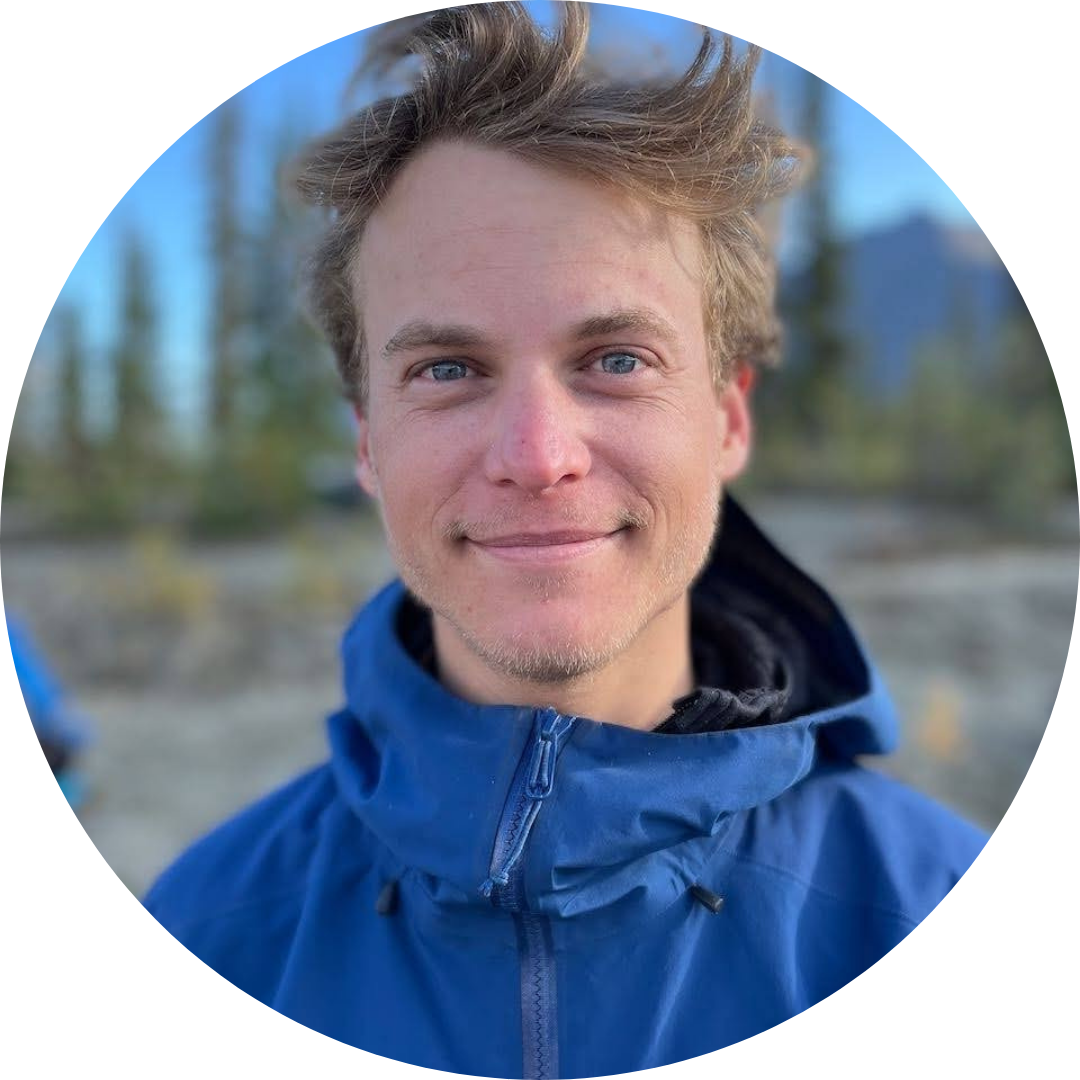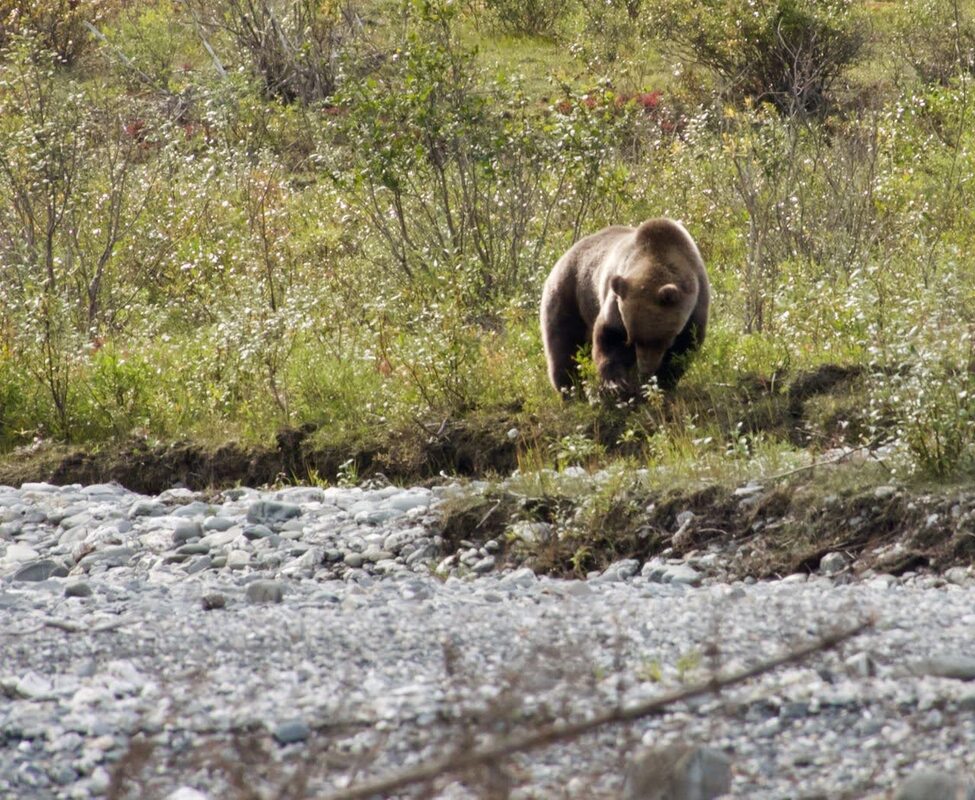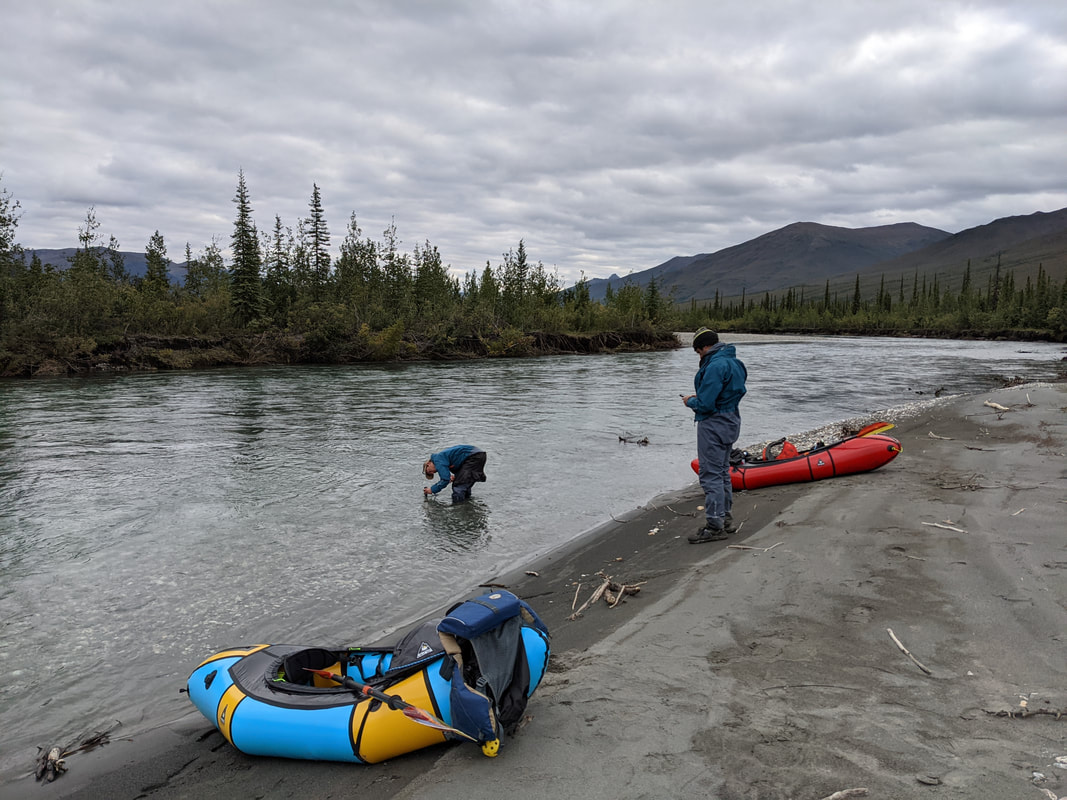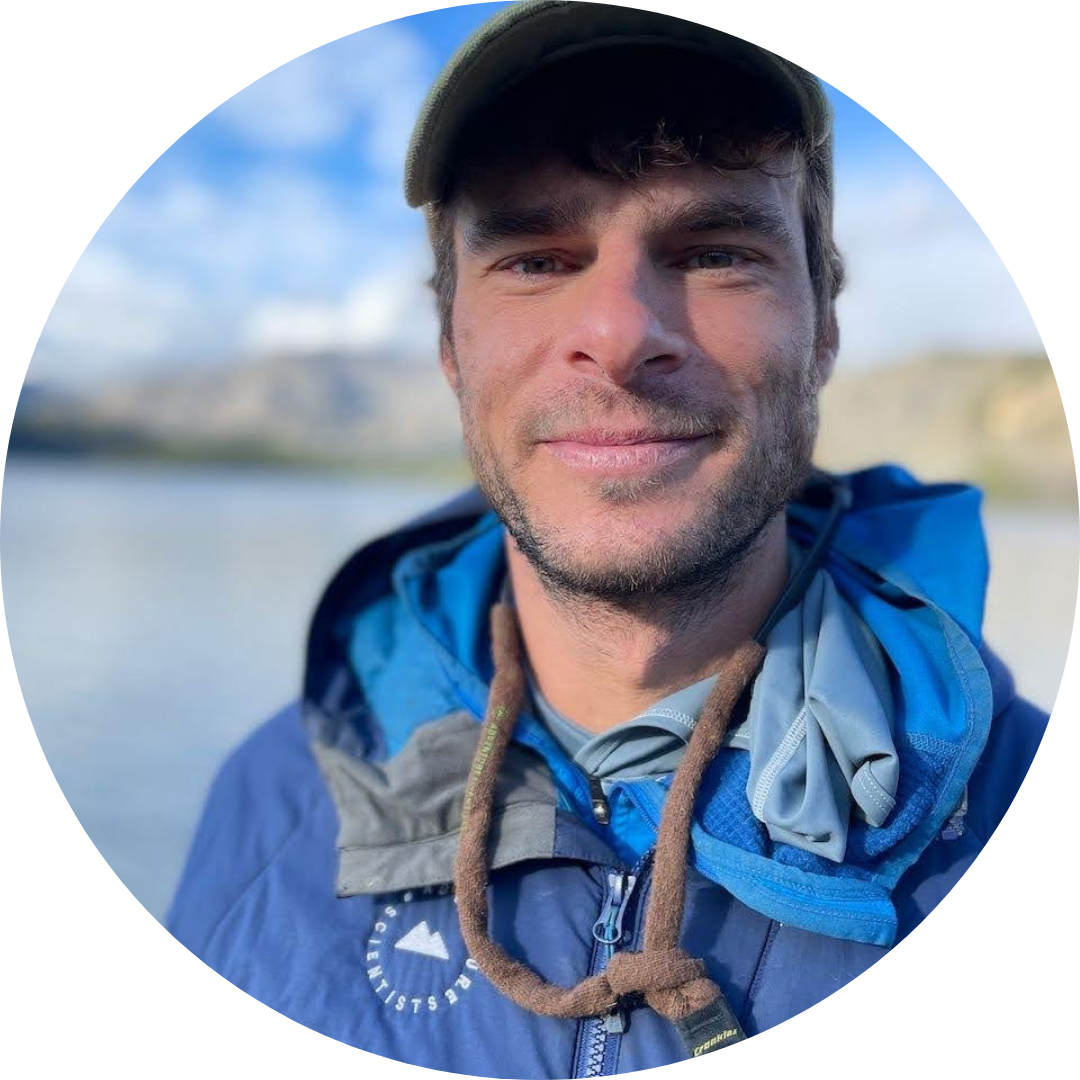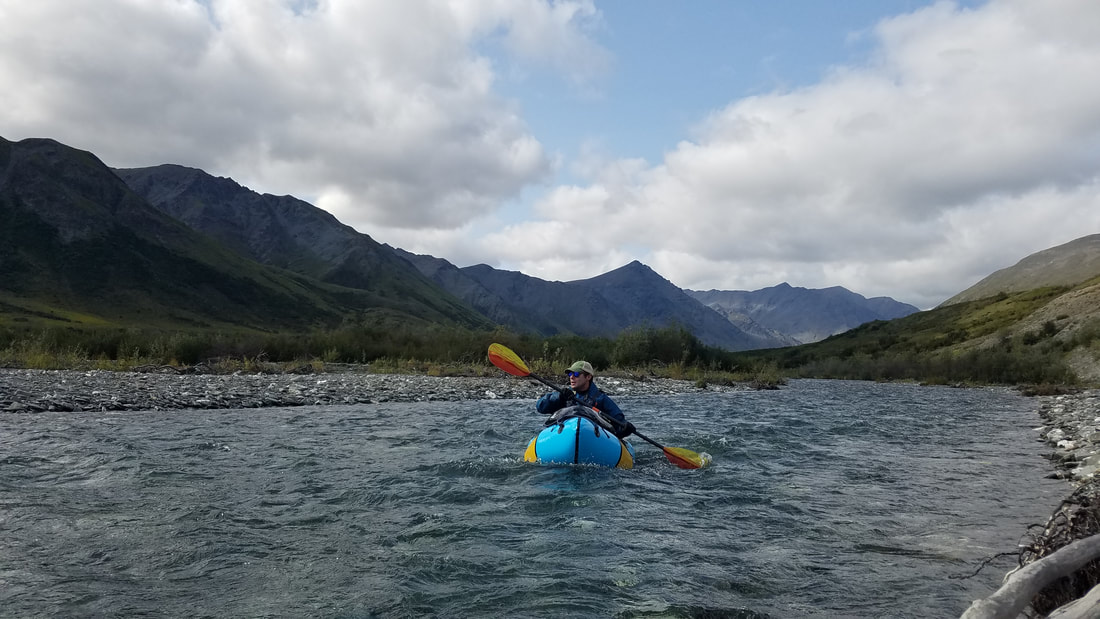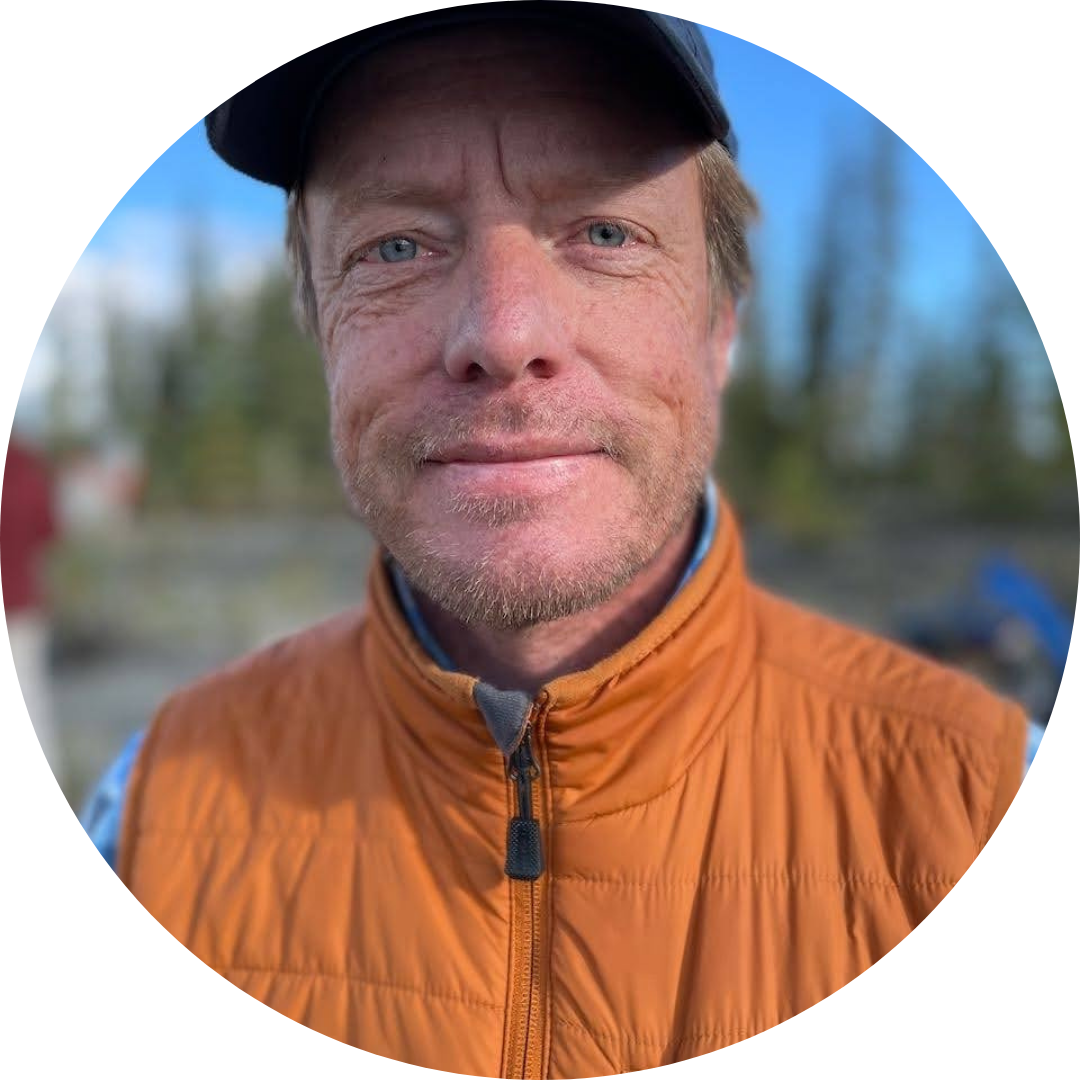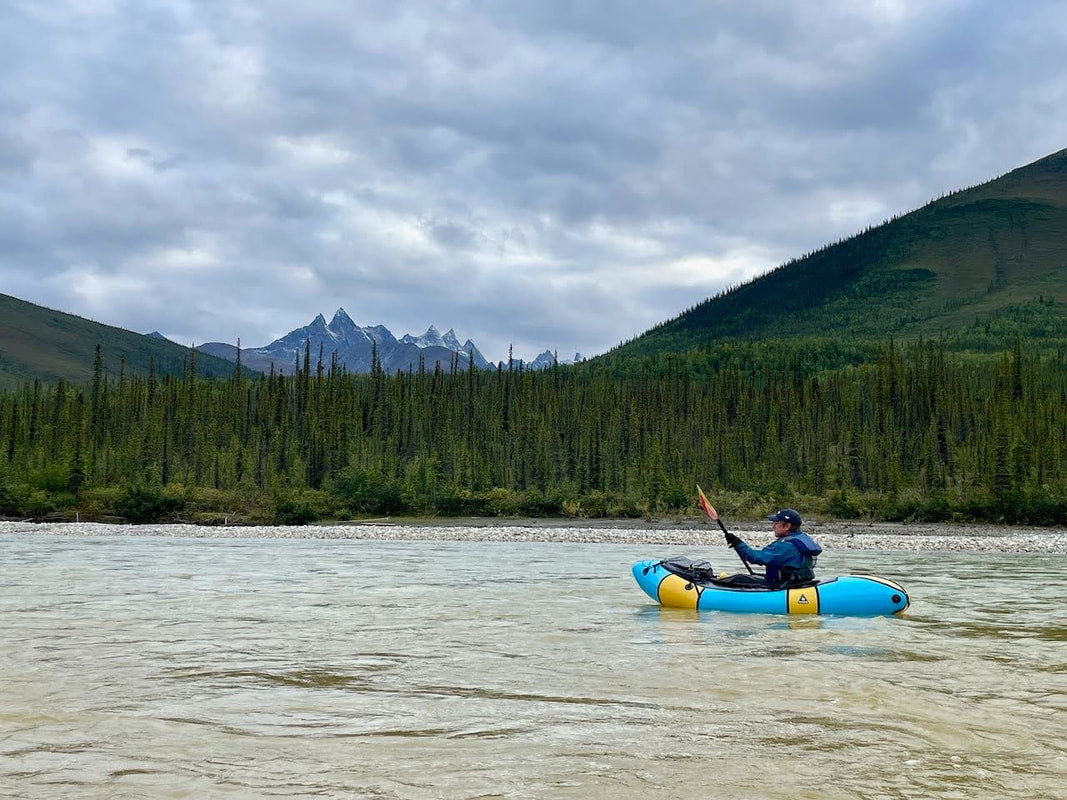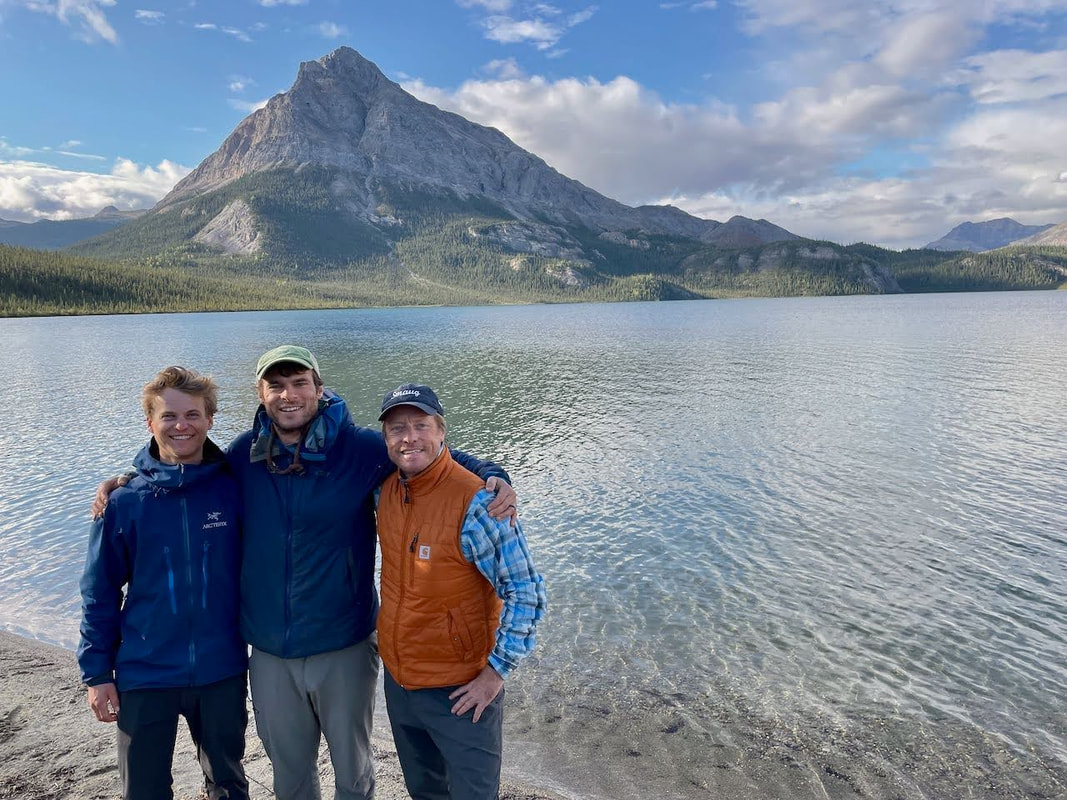
Takahula Lake just off the Alatna River on the final day of the trip. Takahula Mountain in the background.
Adventure Scientists team members, Ricky Jones (Technology Manager), Gregg Treinish (Founder & Executive Director), and Mike Herring (Board Member), spent ten days backpacking and packrafting in remote areas of Alaska to collect data for the Wild and Scenic Rivers project.
Due to the remote and wild nature of the landscape in Alaska, many of the Wild and Scenic Rivers there have unassessed or unknown water quality, making the state a priority area for data collection. Adventure Scientists’ federal and state agency partners will use the data to preserve water resources that support wildlife, recreation, fishing, and human communities.
Here, Ricky, Gregg, and Mike share highlights from their August trip, including grizzly bear encounters, grueling hikes with 70 pound packs, and surprising water quality results.
What drew you to the project and the opportunity to go to Alaska?
I’ve always been fascinated by the tundra ecosystem. I studied soil and water science in college, and classes often referenced this fascinating landscape. The way nutrients, water, and soil move (or don’t move) through the landscape made for great learning opportunities. The more I learned about the landscape, the more questions I had about it. I wanted to feel the squishy peat bogs under my feet. I wanted to smell the slow anaerobic decomposition barely squeaking by an existence in this frozen landscape. There was no possible replacement for these experiences other than going and exploring it for myself first hand.
How did you plan for the trip?
Planning for a trip like this was mainly a logistics problem. Once we had figured out how we were going to get out there, the rest was basic backcountry planning, which we had done plenty of times before. We had most of the gear we needed with a few rafting-specific exceptions, which we rented.
What was the biggest unknown going into it?
The biggest unknown for me was navigating through the landscape itself. I’d heard stories about how difficult it was to maneuver through tundra in the summer. Our friends were telling us four to five miles a day max with how heavy our packs were (60-75 pounds). Our trip required portaging at least 10 miles through trail-less terrain on two different days. None of us had any experience in this specific type of terrain, so we weren’t sure whether our plan was even possible. Some told us it was, others simply said “Good luck!”
What were you most nervous about?
Well, I’d be lying if I said I wasn’t worried about bears. Who wouldn’t be if you’re walking around with a bunch of delicious food on your back in the Alaskan wilderness? Among other things though was simply covering the terrain, food supply, and this one section of Class III whitewater.
What surprised you?
How quiet it was! We hardly saw the quantity of wildlife we expected to see in this terrain. Only a handful of bears, but no moose, caribou, or musk-ox for the entire 10 days we were out there. We chalk it up to being on the water most of the time, and the fact that we probably passed countless wildlife without realizing it.
What story from the trip do you like telling the most?
One of the more exciting moments of the trip was a bear encounter close to camp. Mike and I were headed to bed when Gregg shouted that he’d seen a bear. We decided to go check it out, and before we reached where Gregg had seen the bear, another one came towards us. We stopped and watched it saunter off into the trees. Then it suddenly popped out of the bushes 30 or so yards away. Knowing how quickly a bear can close that gap, we immediately started hollering “Hey bear!” and slowly backing away. The bear started to charge, then stopped and stood up on its back legs to get a better look at us. It stood there for a few seconds before dropping down and running the opposite direction at a very impressive speed.
What lessons did you learn from the trip?
Alaska is huge! If you haven’t been, you’ve probably heard of its vastness. There is no substitute for that feeling of being days out from rescue, not seeing another human for days on end, and feeling the rush of brisk water eventually making its way to the Pacific ocean.
Has the trip changed your perspective about anything, or have you found yourself mulling over some experience in the weeks after?
Alaska was a lot less daunting than I expected it to be. I was prepared to be eaten up and spit out in the vastness and extremity of the Alaskan frontier. But what I found was a landscape agnostic to my existence, a landscape that allowed me to be a visitor, to see and experience its beauty. I’m humbled to have the opportunity and privilege to experience this environment. I’m grateful for my time out there and hope that the data we collected will be used to protect this beautiful landscape.
What drew you to the project and the opportunity to go to Alaska?
When we started the Wild and Scenic Rivers project, I immediately looked to the remote rivers in Alaska’s Brooks Range, which was a place that I’ve always dreamed of throughout my life. It’s one of the most remote large ecosystems on the planet and has always captured my imagination.
What was the biggest unknown going into it?
Going into the trip, the biggest unknown was the weather. I knew there was a significant chance we would get stuck, both on the way out or the way back. We were hopeful that the weather would hold up for us. As we were flying up there, the weather reports were not promising. There was snow in the forecast, and it was going to be 40 degrees (F) and raining the whole time, which is very often hypothermic weather. Fires are possible, but only for emergencies, and they can be hard to get going with how wet the conditions were. It’s interesting because that area is a desert, yet it was raining the entire time we were there.
What surprised you?
What surprised me was that we didn’t see more wildlife. At the same time, we saw so many signs of wildlife, including on nearly every beach that we went to, from wolves to moose, caribou, and bears. It became almost a joke in our group that we’d say, “oh, there’s the bear track.” And it was just a given that there would be one wherever we were.
What lessons did you learn from the trip?
It was a really great reminder with everything going on in the world that wilderness and “turning off” is so important. It really reset my anxiety and my angst at the state of the world, from climate change to coronavirus. The opportunity to completely tune out for those 10 days was just spectacular and a really important reminder of how we can all get swept up in the news cycle. But at the end of the day, the world goes on, and we need to just take care of ourselves, so that we can approach the world in a calmer manner than I was doing beforehand.
Has the trip changed your perspective about anything, or have you found yourself mulling over some experience in the weeks after?
One interesting thing was that we found these really high levels of manganese in the waterways. We know that there are no mines up there, yet the levels were more than six or seven times the EPA’s maximum contamination limits. Anecdotally, locals there tell us that the river changed color dramatically about a decade ago. Not being an expert, I suspect that the river may have cut down to a layer with high manganese. Whether that change came from erosion, thawing permafrost, or some other event, I don’t know. The data will go to management agencies that can tackle the issue. There’s a lot of nuance in water quality and in science, and I think it’s really important to consider the issues from all different perspectives and to make sure that we’re not being alarmist about the data we collect.*
I had an amazing time out there. I think it’s important to realize that this is an area four times the size of Yellowstone National Park with less than 50 people in it while we were there. You get that feeling of wilderness and going to the edge of your comfort zone. There are too few places left on Earth where you can still do that. I encourage everybody to push their comfort zone in nature and to feel the wilderness.
What drew you to the project and the opportunity to go to Alaska?
I have been involved in supporting Adventure Scientists for a few years and was looking for a project to participate in as a volunteer. The chance to play a part in supporting true wilderness and to do so while challenging myself was super exciting. I had never been to Alaska, so I jumped at the chance to experience the wildness first hand, to be in the far north and experience the land and rivers viscerally, and combine it with giving back.
How did you plan for the trip?
I read multiple blogs and spoke to friends from Alaska to understand what I was getting into and what were the critical things we needed to bring. I took kayaking lessons, did multiple backcountry day trips, and worked out to be as fit as possible to try to give myself the best odds of survival and to enjoy the experience.
I also read “The Sun is a Compass” and was inspired by the quest to explore and experience the arctic.
What was the biggest unknown going into it?
Weather. Alaska is notoriously unpredictable, and winter had already begun to set in three weeks early, so we didn’t really know what we were getting into. Weather remained the biggest variable for the entire trip.
What were you most nervous about?
I really didn’t know how I would react to being that remote and being totally self-reliant as a small group of three. With no easy communication or hope for assistance from outside our small party, there was a level of tension around preparation and our ability to handle adverse conditions.
What surprised you?
While I had been told often about the wildness and remoteness of Alaska, I did not really appreciate it until I was deep in the Brooks Range. The sheer vastness of the valley floors, the landscape devoid of any signs of humans, the richness of wildlife, the endless peaks…There was just so much grandeur in every direction. It just continued for miles and miles, and you and your companions are just a small ripple in the fabric.
What story from the trip do you like telling the most?
The challenge of hiking in a desert with so much water everywhere—rivers and streams, rain and snow, moss covered hillsides with deep, shoe-sucking mud…The conditions made everything harder and more intense than it looked.
That and the bear encounter…
What lessons did you learn from the trip?
When you are left on your own—where you have no direction to go but forward, you can rely on nobody but yourself to get you down a river or through a thicket of willows or up a mountain pass, and there is no exit or plan B—your mind finds a place of peace that translates to strength. You just move on, you persevere, and the result is becoming immersed in a place in a way that is unique, and truly fulfilling.
And dry suits work.
Has the trip changed your perspective about anything, or have you found yourself mulling over some experience in the weeks after?
There is no replacement for preparation and planning, but once you are in the wild, the only way to live is to accept things as they are and find the path forward. Out of that peace comes a true appreciation of the journey. I have thought about it many times since, and how the perspective is applicable to other parts of life.
That appreciation has solidified my commitment to the work of Adventure Scientists to understand, protect, and preserve our wild places.

